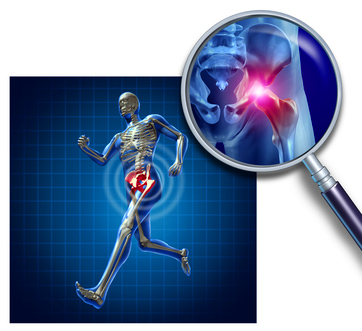Hip Replacement: Direct Anterior Approach
UK HealthCare is supplying this information for educational purposes; it should not be considered an endorsement.
 If you've been told you are a candidate for hip replacement surgery, you may benefit from a minimally invasive surgical technique called Direct Anterior hip replacement surgery. Put simply, this technique changes the direction from which a surgeon can access your hip joint.
If you've been told you are a candidate for hip replacement surgery, you may benefit from a minimally invasive surgical technique called Direct Anterior hip replacement surgery. Put simply, this technique changes the direction from which a surgeon can access your hip joint.
With the Direct Anterior approach, your specially trained orthopedic surgeon is able to repair your painful hip through a natural space between the muscles of the anterior (front) portion of the hip, rather than making the incision on the posterior (back) side, which has the potential of damaging the muscles that make up the primary support system for the joint. These are the muscles you spend weeks and months rehabilitating after surgery.
During this procedure the hip joint is exposed between the anterior muscles, without the need to cut tissue or detach tendons. Once access is gained, the portion of the upper thigh bone (the femoral head and neck) and the hip socket (acetabulum) are prepared for the insertion of the hip replacement implant, just as in a traditional procedure.
The hip replacement is comprised of metal and plastic components that replace the ball-and-socket elements of the hip joint. They are secured within the femur (thighbone) and acetabulum (hip socket) either with bone cement or by "press-fit," meaning the implants are shaped to achieve stability without bone cement. Through the use of X-rays, physicians can ensure the implants have the proper fit and alignment to ensure comfort and a natural range-of-motion after surgery.
Smith & Nephew offers a wide range of hip replacement implants and your surgeon will choose the most appropriate one for you. One consideration used in selecting your implant may be its resistance to the scratching and abrasion that can cause an implant to wear out before its time.
Advantages to the direct anterior approach

This minimally invasive technique allows for preservation of the soft tissue surrounding the joint, allowing for immediate stability following surgery, as well as a possible lower risk of dislocation, as the primary support muscles are left intact.
Patients may have a shorter hospital stay, as there are typically fewer post-operative restrictions and the possibility of a faster healing time associated with this technique.
Important safety notes
Hip replacement surgery is intended to relieve hip pain and improve hip function. However, implants may not produce the same feel or function as your original hip. There are potential risks with hip replacement surgery such as loosening, fracture, dislocation, wear and infection that may result in the need for additional surgery. Longevity of implants depends on many factors, such as types of activities and weight. Do not perform high impact activities such as running and jumping unless your surgeon tells you the bone has healed and these activities are acceptable. Early device failure, breakage or loosening may occur if you do not follow your surgeon's limitations on activity level. Early failure can happen if you do not guard your hip joint from overloading due to activity level, failure to control body weight, or accidents such as falls. Talk to your doctor to determine what treatment may be best for you.
All information provided on this website is for information purposes only. Every patient's case is unique and each patient should follow his or her doctor's specific instructions. Please discuss nutrition, medication and treatment options with your doctor to make sure you are getting the proper care for your particular situation. If you are seeking this information in an emergency situation, please call 911 and seek emergency help.
All materials copyright © 2016 Smith & Nephew, All Rights Reserved.
